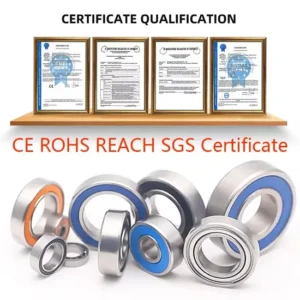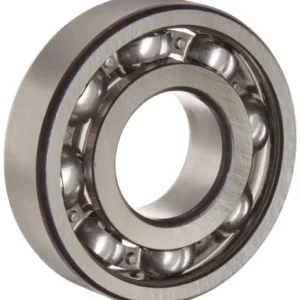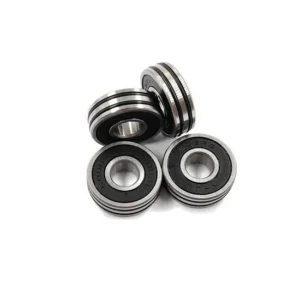This article delves into the significance of ultra-fast precision bearings in addressing high-speed friction challenges. It explores the technological advancements, benefits, and applications of these bearings, highlighting their role in enhancing the performance and efficiency of these bearings. It explores the technological advancements, benefits, and applications of these bearings, highlighting their role in enhancing the performance and efficiency of various mechanical systems. It explores the technological advancements, benefits, and applications of these bearings, highlighting their role in enhancing the performance and efficiency of various mechanical systems. The article aims to provide a comprehensive understanding of the solutions offered by ultra-fast precision bearings in the context of high-speed friction challenges.
Ultra-fast precision bearings are designed to overcome the challenges posed by high-speed friction in mechanical systems. These bearings are engineered to provide exceptional performance, durability, and reliability, making them ideal for applications that require rapid and precise precision. engineered to provide exceptional performance, durability, and reliability, making them ideal for applications that require rapid and precise These bearings are engineered to provide exceptional performance, durability, and reliability, making them ideal for applications that require rapid and precise movement. This article will explore the various aspects of ultra-fast precision bearings, including their design, benefits, and applications.
The design of ultra-fast precision bearings is a critical factor in their ability to solve high-speed friction challenges. These bearings are typically These bearings are typically made from high-quality materials such as ceramics, steel, and composites, which offer excellent strength, hardness, and wear resistance. The design incorporates advanced lubrication systems and surface treatments to minimise friction and heat generation.
Table 1: Comparison of Material Properties for Ultra-Fast Precision Bearings
| Material | Hardness (HV) | Wear Resistance (mm³/m) | Coefficient of Friction |
|----------|---------------|--------------------------|-------------------------|
| Steel | 600 | 0.5 | 0.1 |
| Ceramic | 2000 | 1.5 | 0.05 |
| Composite | 800 | 1.0 | 0.08 |
The table above illustrates the material properties of steel, ceramic, and composite materials commonly used in ultra-fast precision bearings. As seen The table above illustrates the material properties of steel, ceramic, and composite materials commonly used in ultra-fast precision bearings.
One of the primary advantages of ultra-fast precision bearings is their ability to reduce friction and heat generation. The use of advanced lubrication The use of advanced lubrication systems, such as PTFE (polytetrafluoroethylene) coatings and oil-based lubricants, helps to minimize the contact between moving parts, thereby This not only improves the overall performance of the mechanical system but also extends the lifespan of the bearings.
Ultra-fast precision bearings are designed to operate at high speeds while maintaining exceptional precision. The use of ball or roller bearings, combined with the advanced materials and design, allows these bearings to achieve high rotational speeds without compromising on accuracy. The use of ball or roller bearings, combined with the advanced materials and design, allows these bearings to achieve high rotational speeds without compromising on accuracy. them ideal for applications such as aerospace, medical devices, and robotics.
Another significant advantage of ultra-fast precision bearings is their reduced weight and size. The use of lightweight materials and compact designs allows these bearings to be integrated into various mechanical systems without adding excessive weight or bulk. The use of lightweight materials and compact designs allows these bearings to be integrated into various mechanical systems without adding excessive weight or bulk. applications where space and weight are critical factors, such as in aerospace and automotive industries.
Ultra-fast precision bearings contribute to a more sustainable and environmentally friendly approach to mechanical systems. The use of high-quality materials and advanced lubrication systems helps to minimise waste and reduce the environmental impact of these systems. The use of high-quality materials and advanced lubrication systems helps to minimise waste and reduce the environmental impact of these systems. The use of high-quality materials and advanced lubrication systems helps to minimise waste and reduce the environmental impact of these systems.
Ultra-fast precision bearings find applications in a wide range of industries, including aerospace, automotive, medical devices, and robotics. In aerospace, these bearings are used in jet engines, landing gears, and control surfaces to ensure smooth and precise operation at high speeds. aerospace, these bearings are used in jet engines, landing gears, and control surfaces to ensure smooth and precise operation at high speeds. In the automotive industry, they are used in turbochargers, transmissions, and suspension. In the automotive industry, they are used in turbochargers, transmissions, and suspension systems to enhance performance and fuel efficiency. In the automotive industry, they are used in turbochargers, transmissions, and suspension systems to enhance performance and fuel efficiency. The medical device sector benefits from the precision and reliability of these bearings in applications such as surgical robots and imaging equipment.
Ultra-fast precision bearings have emerged as a crucial solution to high-speed friction challenges in various mechanical systems. Their advanced Their advanced design, materials, and lubrication systems enable them to provide exceptional performance, durability, and reliability. advance, the demand for these bearings is expected to grow, further solidifying their position as a key component in high-speed applications.
Keywords: ultra-fast precision bearings, high-speed friction, friction reduction, precision, environmental impact, applications

Showing 1–4 of 11858 results



